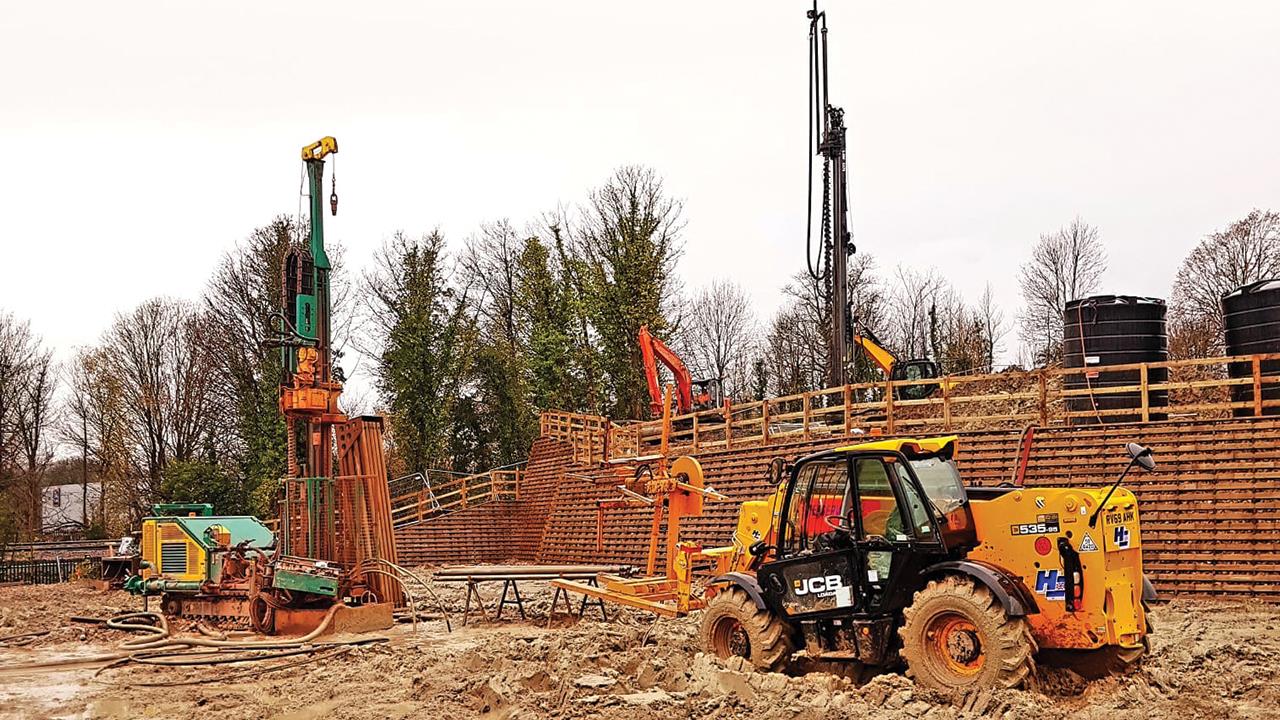

Dr Matthew Trewhella, Managing Director at Kensa Contracting, explains why getting trained up on the latest heat pump technology will help to futureproof your business.
The growing number of ground source heat pump installations in existing and newbuild housing is accelerating in light of the government’s new National Design Guide and imminent Future Homes Standard; both of which recommend heat pumps as sustainable heating alternatives to fossil fuels.
With the Future Homes Standard mandating the end of fossil fuel heating systems in all newbuild homes in just five years, heating engineers have a significant opportunity to utilise their experience and knowledge and upskill to embrace the heat pump surge. Heat pump installed capacity has increased over the last year by 61% for large-scale installations, and by 175% since the first year of the Renewable Heat Incentive, according to the Department for Business, Energy & Industrial Strategy.
In this article, I will explain the market drivers for heat pumps and why heating engineers should be looking to make the switch this year.
The business case
The Future Homes Standard sets out what we can expect from our buildings from 2025. How we are going to get there is notably marked under the ‘transitional arrangements’ outlined in the proposed Future Homes Standard, which could see an almost overnight ban on oil, LPG, and electric as soon as mid-2020. Under the Standard, gas will get much harder, and heat pumps much easier, to introduce into newbuild homes.
The proposed new SAP calculation is intended to allow assessment of the effects of the Future Homes Consultation proposed options. One of SAP 10.1’s headline-grabbing proposals is the carbon factor for electricity at 0.136 – this will mean ground source heat pumps have carbon factors of 0.030 to 0.045, compared to a gas boiler at 0.23 – a saving of more than 80% in carbon emissions just by switching the heating to ground source heat pumps.
With lots of councils across the country declaring climate emergencies, many of which commit to carbon neutral targets ahead of the UK’s 2050 ambition, a growing number of newbuild developments are already embracing the low carbon approach.
The push by local planning authorities to place energy efficiency and carbon saving requirements on buildings that go beyond the requirements of the national Building Regulations is resulting in some ground-breaking, ultra-low carbon energy efficient developments. Two notable examples are:
In adherence to the Committee on Climate Change’s recommendation that homes should make use of low carbon sources of heating, in particular electrically-powered heat pumps, and the new National Design Guide, which singles out ground source heat pumps and district heating systems as recommended heating technology, Bristol is witness to a number of newbuild schemes utilising this heating solution to support its 2030 carbon neutral pledge.
Over 130 new homes at Ashton Rise are being built by Bristol City Council using the high-efficiency SIG iHouse solution, and heated by individual Kensa ground source heat pumps connected to a shared ground loop array of boreholes. The installation would see each home making lifetime carbon savings of 30 tonnes compared to individual gas boilers, while also removing all local NOx emissions, ensuring local air quality is not impacted by the choice of heating system.
Across the city, a further 50 affordable homes are being constructed to Passivhaus standards by United Living, in partnership with United Communities and the Bristol Community Land Trust. These energy efficient ‘self-finish’ properties will each feature a mini Kensa Shoebox ground source heat pump connected to an ambient shared ground loop array.
Complementing the ground source heat pumps will be a mechanical ventilation and heat recovery system, making the homes even more energy efficient and further lowering fuel bills for the residents. Solar PV panels further reduce costs, while supporting a green transport plan which features electric car charging points, a car share scheme, and improved pedestrian and cycle access.
The business plan
The transition from a gas heating installer to a ground source heat pump installer is straightforward, and reduces risks, cost, and time. Unlike a gas boiler system, a ground source heat pump has no flue or ventilation requirements, no condense pipe to fit, no more landlord gas safety checks, and simpler and cleaner servicing.
Training courses covering the Microgeneration Installation Standard MIS3005 are available across the UK. These include requirements for contractors undertaking the supply, design, installation, set to run and handover of microgeneration heat pump systems.
As well as the MIS3005 standards above, Kensa’s one-day course offers a number of additional topics including peak heat load, ground array design, preferred system architecture, flow temperature, and heat emitter calculations
If you'd like to keep up-to-date with the latest developments in the heating and plumbing industry, why not subscribe to our weekly newsletters? Just click the button below and you can ensure all the latest industry news and new product information lands in your inbox every week.